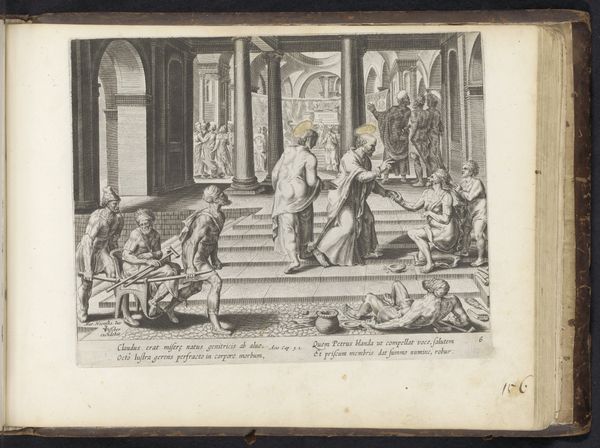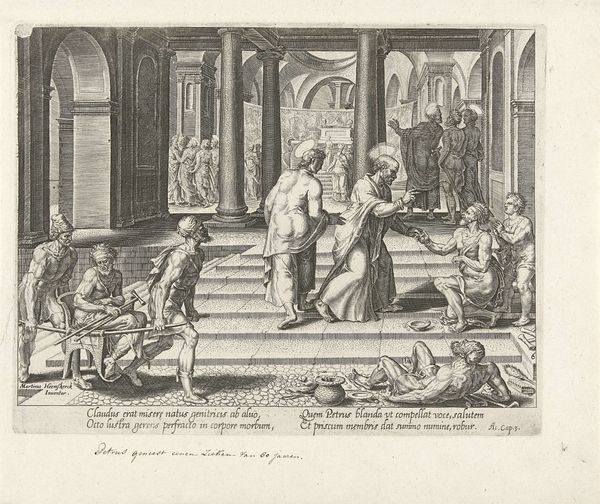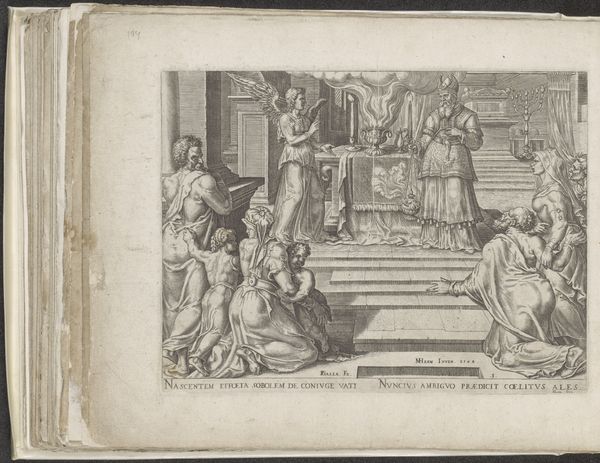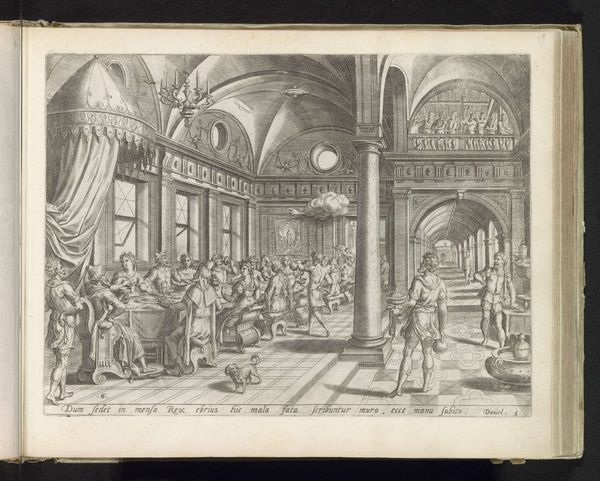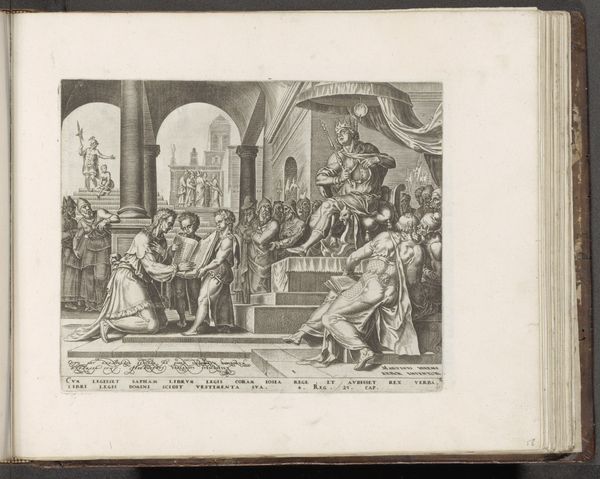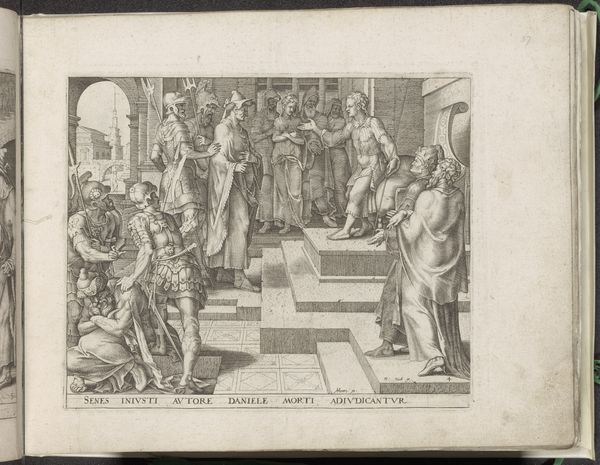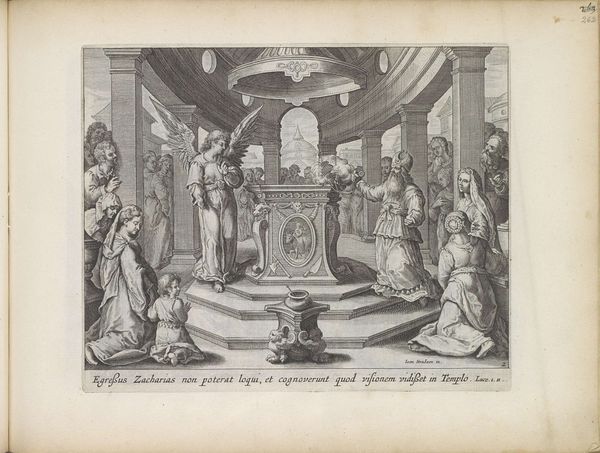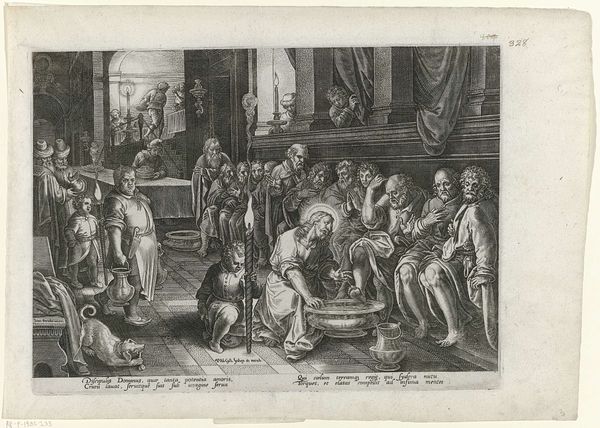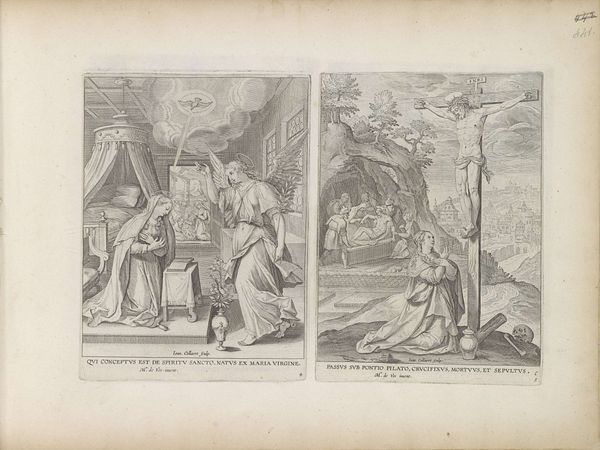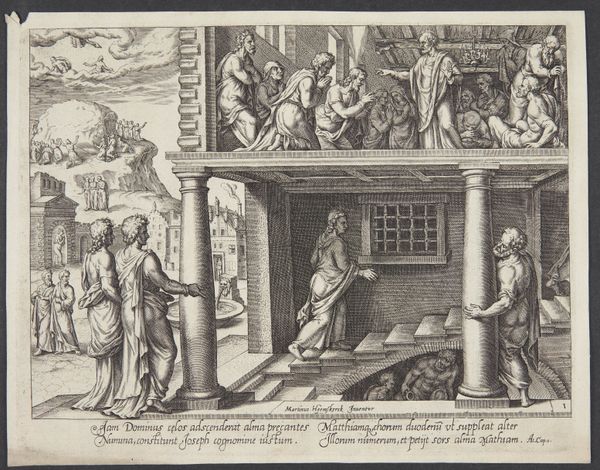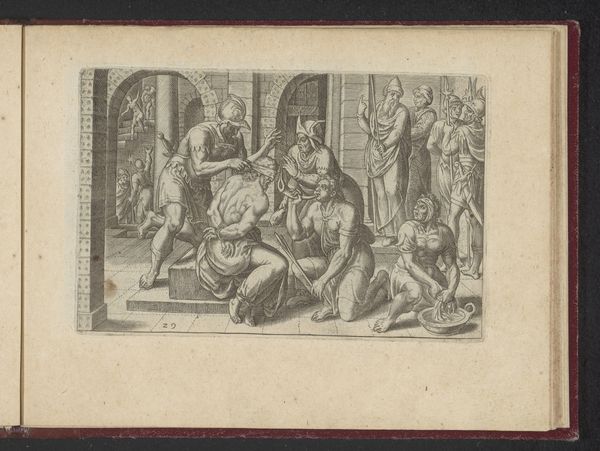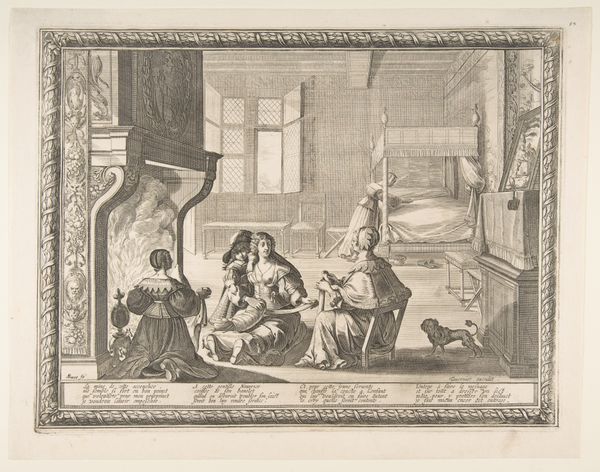
drawing, print, pen, engraving
#
drawing
#
aged paper
#
toned paper
#
medieval
#
mechanical pen drawing
# print
#
old engraving style
#
sketch book
#
perspective
#
figuration
#
11_renaissance
#
personal sketchbook
#
pen-ink sketch
#
pen and pencil
#
pen work
#
pen
#
history-painting
#
academic-art
#
engraving
#
pencil art
Dimensions: height 239 mm, width 328 mm
Copyright: Rijks Museum: Open Domain
Curator: Immediately, I'm struck by how theatrical this feels, almost stage-like in its arrangement. The artist is Lucas or Johannes van Doetechum, and the work, rendered in engraving, pen, and pencil, is titled *Dream of Nebuchadnezzar.* It dates back to 1585. Editor: A dream, definitely. And rendered as a dream. What an incredibly ornate room filled with a dream within a dream! It feels almost architectural with the perfect vanishing point drawing the eye to the back wall. Curator: Yes, a dreamscape articulated through Renaissance sensibilities. The tale comes from the Book of Daniel, where King Nebuchadnezzar is troubled by a recurring dream, a prophetic vision he seeks to interpret. This scene visualizes that moment. I notice the artist layers figures onto the walls inside statue niches with bodies appearing as clouds in the sky, both perhaps as representations of angels and the idea of a spiritual transformation. Editor: Precisely. The very rigid figures provide a grounding to the chaotic image. The architectural elements, so precisely rendered, act as anchors. This engraving has a remarkable balance despite its narrative complexity. The scale is interesting as well. It is easy to image this rendering in a huge painting! The texture is also pretty compelling given the constraints of the media of pen and engraving. The dog cowering beneath Nebuchadnezzar's throne also contrasts with the other statues. Is it real or Memorex? Curator: The dog serves to show how a symbol can serve different roles for different people. In our day-to-day cultural life, a dog would probably indicate fealty to authority, an attribute much wanted by many people in this society! So this can be compared to a figure set back as a statue with arms in a welcoming gesture, offering its divine love as much as its unyielding protection! Editor: An astute observation! Seeing the divine alongside such earthly images in an interior gives the dream real impact and immediacy, allowing the viewer to interpret these ideas. The way they juxtapose gives a good lesson to designers today, to bring our human world with an aura of timeless and spiritual meaning! Curator: Absolutely, an enduring testament to the power of dreams and their symbolic weight across cultures. Editor: Indeed. Thank you for providing that fascinating dive into the world that brings the ancient with a Renaissance re-birth, a rich mixture indeed.
Comments
No comments
Be the first to comment and join the conversation on the ultimate creative platform.

